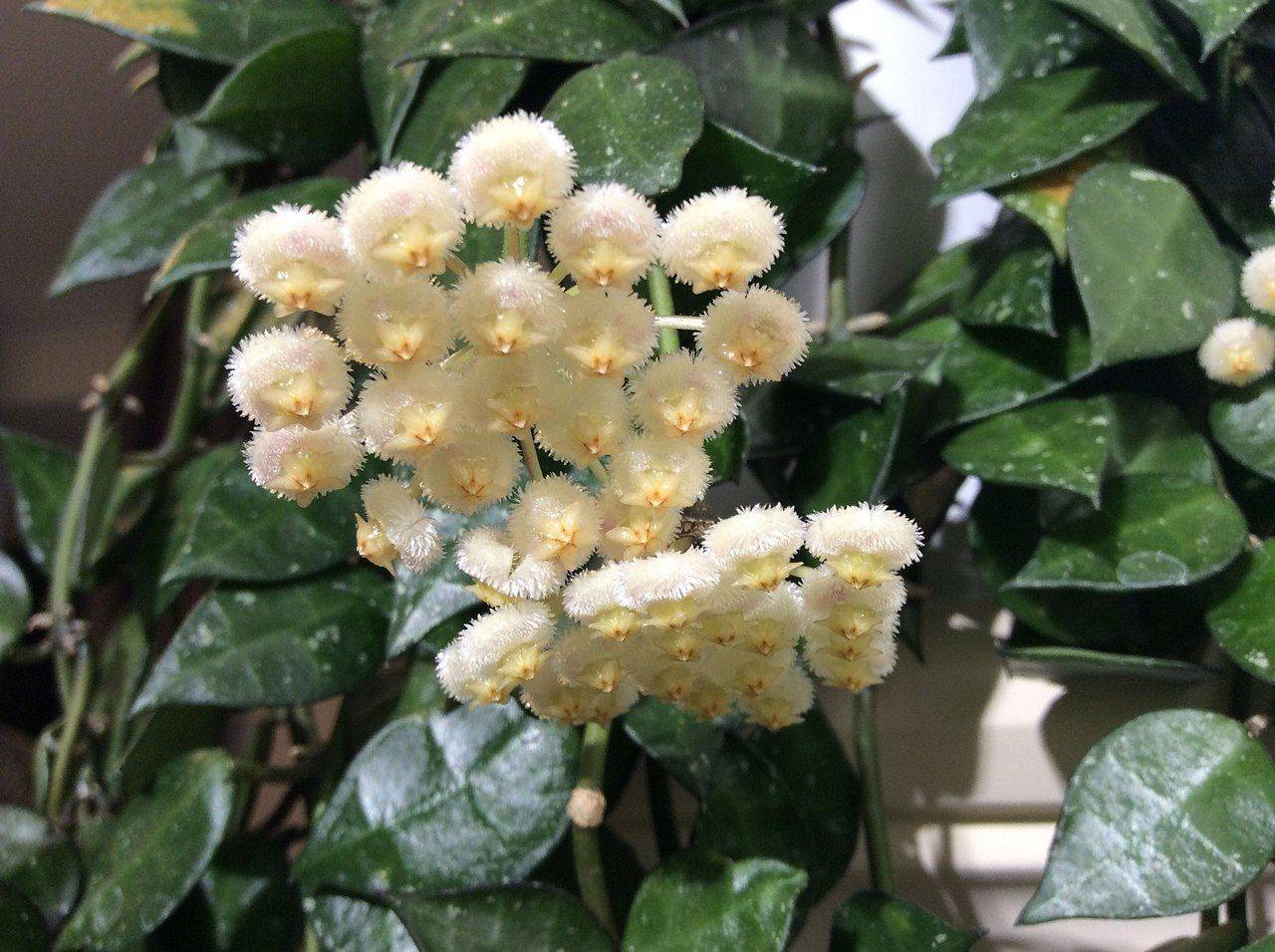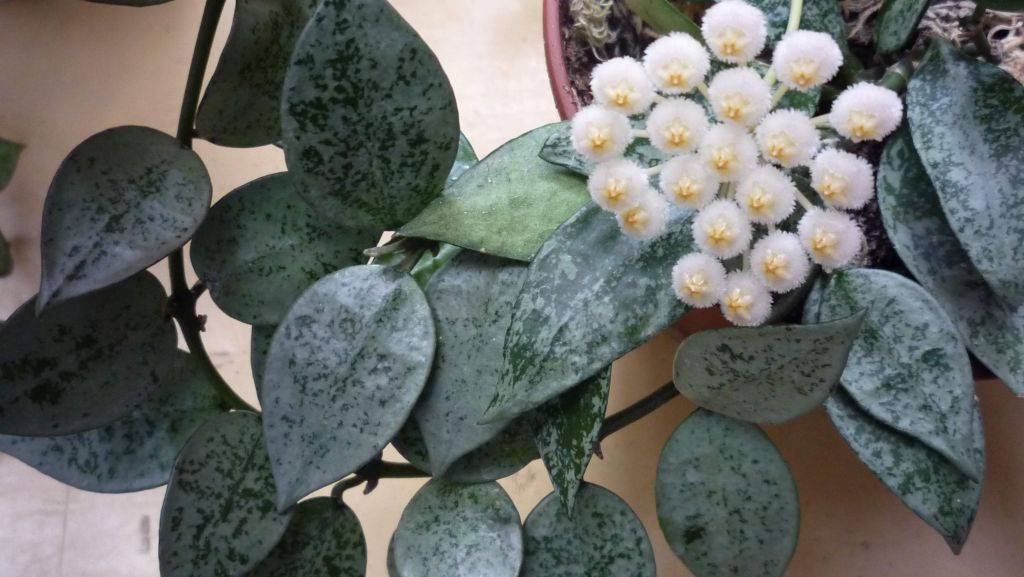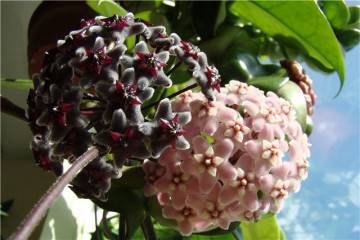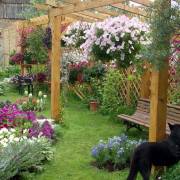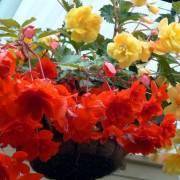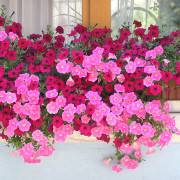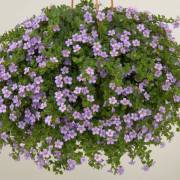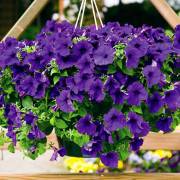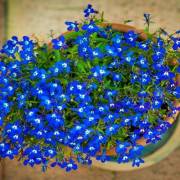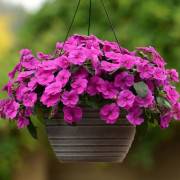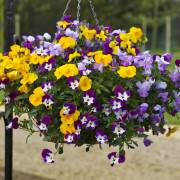Hoya lacunosa - types of Eskimo ilver and Royal flush
Content:
Wax ivy, or hoya lacunosa, is a popular indoor liana that attracts attention with its large beautiful leaves and unusual inflorescences. Deservedly included in the top 20 most beloved ampel plants by flower growers.
What a flower looks like: description and characteristics
Hoya Lacunosa, or concave hoya, is an evergreen tropical vine that belongs to the subfamily of the Asclepiadoideae and the Apocynaceae family. Natural habitat - India and China, Singapore, Malaysia, Indonesia, Thailand, Java islands, Sumatra, Borneo.
Epiphyte settles next to large trees that support it. Under natural conditions, it enters into symbiosis with ants living among its roots. The dark green leaf has a hollow, hence the name concave (lat. Lacuna - "hollow").
The front side of the sheet is matte, and the back is shiny. The length of the leaves is up to 6 cm, the width is up to 2.5 cm. The young growth is colored red-brown, gradually becoming dark green. Numerous lashes form a dense, practically non-curling falling cascade.
Stems are green or reddish. It blooms with inflorescences of white or pinkish shade, 15-20 pcs. on thin rod branches. Produces a pleasant aroma that intensifies towards night.
The most common varieties:
Tove
The krone is distinguished by its miniature size compared to other varieties. The leaf has a characteristic purple color, which appears brighter in the sun. The inflorescence is cream colored with a yellow core. Each flower is 6 mm in diameter, and there are more than 20 of them in the inflorescence.
Snow caps
Beautiful silvery leaves are up to 5 cm long and up to 2 cm wide. The flowers are boiling white up to 10 mm in diameter. It is considered a slow growing variety.
Hoya Eskimo
A diamond-shaped glossy sheet has chaotic silvery-greenish spots that acquire the greatest contrast in diffused but bright light. The flowers of the hoya Lacunosa Eskimo are white - standard for this species. If the silver part predominates on the leaves, then the variety is called with the prefix super (super) or silver (silver).
RoyalFlush
Leaves are dark bronze in color with small silvery blotches up to 6 cm long. Inflorescences are white. Young growth in Flash (Flash, or Flash) has a reddish-brown color.
Picture 6 Hoya lacunosa Royal Flush with classic white flowers
Since 1826, the plant has been described in botanical reference books and is cultivated in greenhouses and in homes. The selection of new varieties was carried out along the way of obtaining vines with bright variegated leaves.
Care features
Proper humidity and regular bathing - this will have to be monitored first of all when growing hoya at home.
Temperature
The optimum air temperature in the phase of active growth is from 22 ° C to 25 ° C.In winter, a decrease to 12 ° C is allowed, but not at all necessary. If, in the fall, ensure a slight decrease in air temperature and reduce watering, then this will have a positive effect on spring flowering.
Lighting
Hoya needs diffused sunlight. If the pot is placed near the south window, and the sun shines through the transparent tulle, then such conditions are considered ideal.
Watering
In the spring and summer, the soil is watered as much as necessary so that it always remains slightly moist. In winter, watered only 3 times a month.
Spraying
The plant does not just love water, it is shown warm bathing. Long lashes are washed by immersion in a bowl of water.
Humidity
The optimum humidity for hoya is about 60%. She tolerates a slight decrease (up to 40%) or an increase (up to 80%) without negative consequences.
Priming
The optimal composition of the substrate: humus, peat, river sand, fertile soil in equal proportions. At the bottom of the pot, drainage from expanded clay or pebbles must be placed.
Top dressing
To fertilize hoya, you need a complex mineral fertilizer. There are several options for sale from different manufacturers, you must choose with the note "For vines". The dosage is used three times less than the manufacturer recommends. If an excess occurs, then the flowers and leaves of the plant discolor.
Features of growing in the open field
In the summer, the hoyi pots can be taken out into the fresh air. Planting in the soil is not practiced, since after it it is difficult to get rid of numerous pests. The air temperature must be above 12 ° C. For the whole summer, the liana will need reliable support and shelter from direct sun and wind. You will have to water the plant every day.
Transfer
Only young plants are renewed every year. Adults (5 years and older) are transplanted every 3 years. Each time the pot is increased in diameter by only 2 cm.
Pruning
For the harmonious development of the crown, it is necessary to regularly shorten the main shoots, stimulating the formation of lateral branches. The first time this is done after the growth of the fourth leaf on the main shoot.
When and how it blooms
Unlike other types of hoya, lacunosa, when blooming, does not close its flowers until they completely wither. In addition, the scent of the flowers is clove during the day and incense at night.
Types of flowers
Umbellate inflorescence usually consists of 15-20 buds. No nectar is released. Each flower lives for about five days. Shades vary in different varieties from boiling white to cream and pinkish. Usually the core is bright yellow. The beginning of flowering is May.
Flower shapes
The flower consists of a white fleecy corolla and a white crown with a lemon center. Usually, a fully opened flower has a diameter of 5-6 mm. As the petals unfold, the petals are curved, giving the flowers a characteristic, very memorable look.
Flowering period
Hoya usually blooms in May. Each inflorescence lasts for 5 days, after which it fades. But with good care, the vine drives out the buds for a very long time, and they do not bloom at the same time, replacing each other.
Changes in care during flowering
From May and almost until the end of summer, it is necessary to provide the vines with bright, but diffused lighting, as well as space for lashes, which must be constantly attached to the support.
How does it multiply
Regardless of the variety chosen by the florist, the reproduction of vines occurs easily and without complications.
Germinating seeds
Finding hoya seeds on sale is a great success. It's all about their short shelf life.Usually, in nurseries, they are slightly dried after collection and immediately sown. Seedlings appear in a week.
Rooting cuttings
The optimum cutting length is 5 cm. You can germinate in water or in a damp substrate. The first roots should appear within a week. To maintain optimum humidity, the rooted cuttings are covered with transparent caps.
Sheet
If it is not possible to cut the stalk, then you can try to root a healthy leaf. It is pinched off with the longest petiole, which is dipped at an angle into the ground and covered with a bag or glass jar.
Other options
Hoya can be propagated by layering. Scourges willingly release air roots, so they are easy to root, just put an additional pot next to it. The branch is bent to the soil and secured with a hairpin. The rooting process takes about a month, after which the new plant is cut off from the mother.
Possible growing problems
In comparison with other types of hoya, lacunosa rarely gets sick.
Pests
Of parasites, she can be threatened by:
- spider mite;
- aphid;
- mealybug;
- shield.
Against them, they are treated with insecticides and acaricides intended for indoor plants, for example, a phytoverm preparation.
Other problems
Hoya extremely dislikes overdrying an earthen coma. As soon as the buds appear, you cannot move the pot from place to place. After winter, the vine is "awakened" by immersion for 1 hour in a bath with water heated to 30 ° C. Watering with potato broth, rich in potassium, will help to strengthen the immune system.
Hoya diseases:
- bacterial. Manifested by the fact that the leaves and shoots become soft and sticky. Treatment with preparations containing copper helps;
- viruses. They form thickenings and spots on the leaves. Practically resistant to treatment;
- fungi. Stunted growth and root rot are typical symptoms. It is necessary to change the soil, treat the roots with crushed activated carbon.
Flower types
In the catalogs of nurseries you can find the following varieties of hoya lacunose:
- Hoya lacunosa v. lacunosa is a plant with dark green leaves and silvery spots up to 12 cm long and up to 2 cm wide. Flowers have a white corolla and crown;
- Hoya lacunosa v. pallidiflora Hook f. has smaller foliage compared to standard sizes. The species is found in Malaysia and Thailand;
- Hoya lacunosa aff. (aff. means "similar") has slight differences in color and size of the leaves.
Refined aroma, long flowering, exceptionally beautiful foliage and unpretentiousness - these are the main qualities for which hoya lacunosa is so appreciated. But you need to be extremely careful when growing a flower, as it is poisonous.
